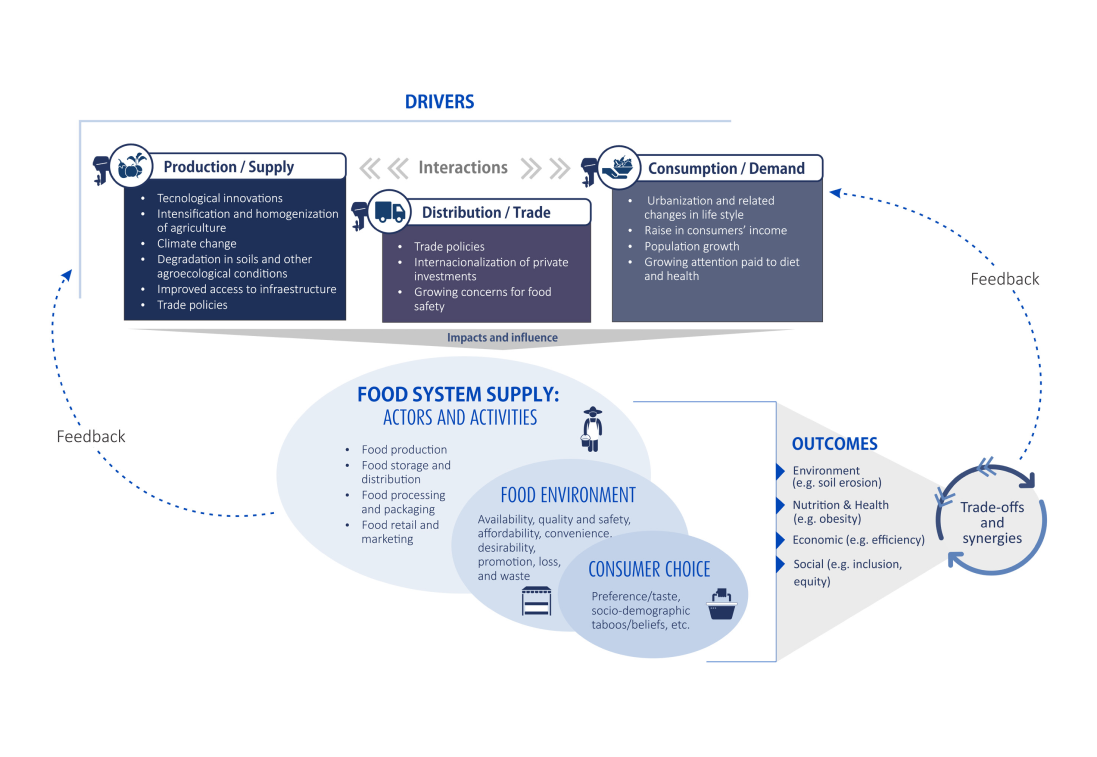In order to help decision-makers mentally picture key-components of the food systems and better understand the different dynamics and interactions that exist between them, we developed a conceptual framework.

In each country, the conceptual framework was used to guide the various discussions that were organized between the project team and the country stakeholders as part of the overall process of co-selecting the appropriate indicators necessary to build the country food system profile. This participatory process was structured into a clear and transparent 14-step protocol which provides one of the most rigorous, yet participatory, process available on food system overview – see details in the methodology document.
Not just in the sense that it involves stakeholders from the outset but also because it is designed to capture and include countries’ food system specificities and unique context.
From step 1, each country’s country profile is designed and constructed with input from the national stakeholders. This is a fundamental distinction with other initiatives which propose similar food systems profiles but are designed ‘behind close doors’ by experts or academics, without any input from the stakeholders. In our case stakeholders provide feedback and validation at every step.